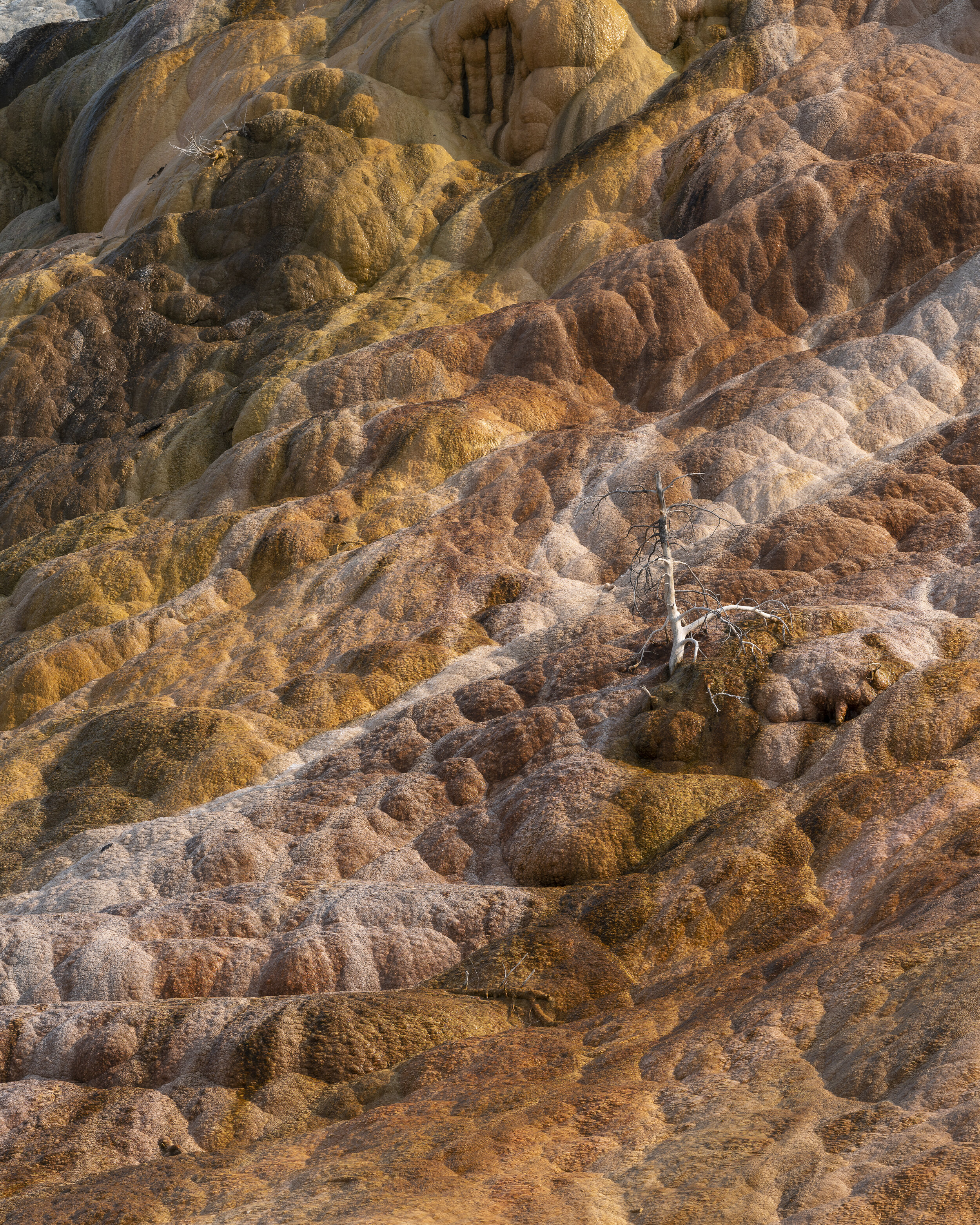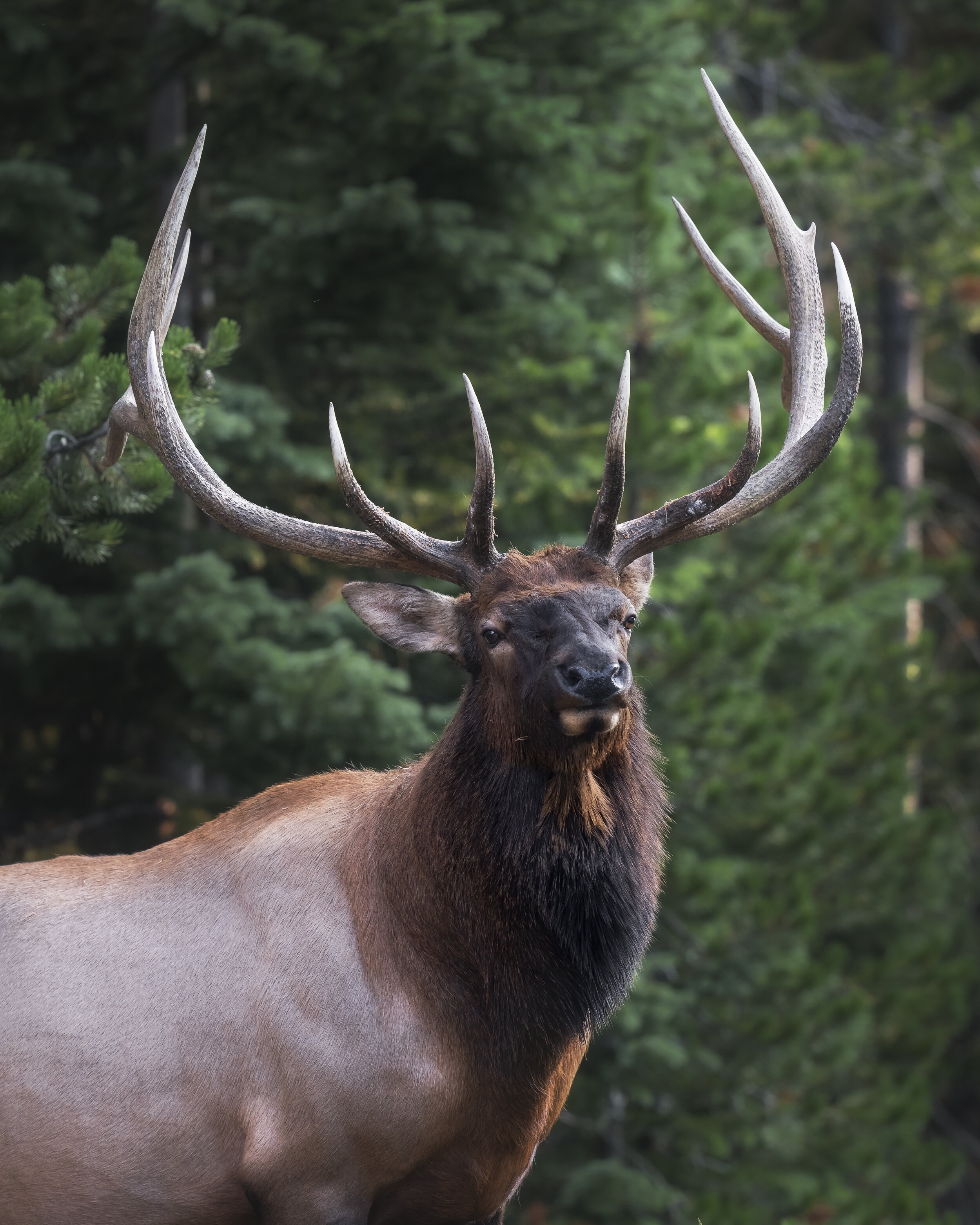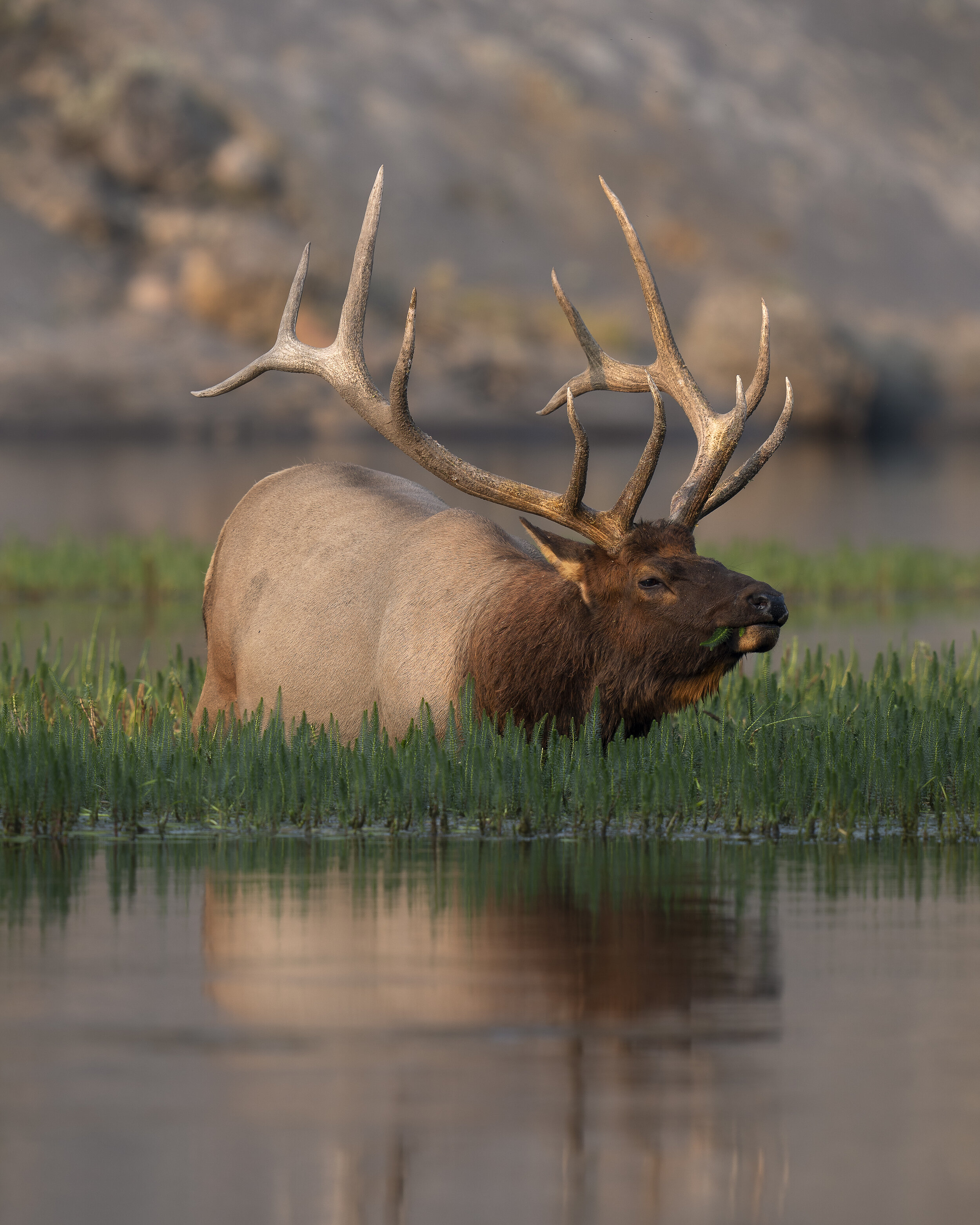Introduction
Yellowstone National Park has been well documented over the last 150 years. It is one of the most popular national parks in the United States for a reason. Much has already been written about this special place, so this blog will highlight the very best of Yellowstone and offer some practical recommendations for enjoying this national treasure.
Familiarization
Yellowstone National Park is a massive wilderness area consisting of approximately 3,500 square miles of rugged lands. The vast landscape requires a fair amount of travel to experience the highlights but grouping certain areas and activities together will allow for an enjoyable overall experience.
The Park features an array of geothermal hot springs, dense forests, winding rivers with waterfalls, deep canyons, and massive valleys covered in sagebrush. Amazing encounters with many of the largest mammals in North America can be found throughout. A best practice to ensure a successful trip is to familiarize yourself with the layout of Yellowstone Park prior to your arrival.
Square in shape, the park has five entrances around the perimeter. Lodging, camping, and limited services are available within the park. However, the towns that lie just outside the park entrances have a greater range of dining, lodging, supply, and fuel options.
Lamar Valley (400mm f4 ISO 400)
Geothermal Features
Yellowstone National Park has a plethora of geothermal features. These include hot springs, geysers, mudpots, travertine terraces, and fumaroles. The two most famous features are Old Faithful geyser and the ever-colorful Grand Prismatic Spring. However, areas such as Mammoth Hot Springs, Artists Paintpots, Midway Geyser Basin, and Norris Geyser Basin are filled with unique and stunning features.
Mammoth Hot Springs
Aside from the resident herd of elk usually found throughout the Mammoth Hot Springs area, the geothermal features and travertine terraces are truly phenomenal. Palette Springs, with multi-hued orange, pink, and yellow terraces, is an incredible sight. Remnants of dead trees make this an otherworldly place. Canary Spring is another remarkable site seen from the Upper Terraces boardwalk. Bulbous formations of orange and pure white make up the terraces trickling down from Canary Spring. Lastly, Orange Spring Mound is one of the more unique features within the Upper Terraces.
Palette Springs (135mm f11 ISO 100)
Midway Geyser Basin
Midway Geyser Basin is home to the renowned Grand Prismatic Spring. This spring, along with a few others, empties into the adjacent Firehole River which runs alongside the many geothermal basins within the park.
Grand Prismatic Spring is the third largest spring in the world. Its radiant rings of orange, yellow, and green surround the deep electric blue pool. Grand Prismatic is over 120’ deep and has a diameter of 370’. The colorful bands surrounding the spring emanate from different species of heat-loving thermophile bacteria living in the water.
Unlike many other geothermal features that look amazing in early morning or late afternoon light, Grand Prismatic Spring looks best in mid-day sun after the cool evening-induced steam fog has cleared from above the water.
Two different viewing areas exist. For up-close views, park in the Midway Geyser Basin lot and walk along the boardwalk. For the classic higher-elevation overview, park at the Fairy Falls Trail lot and take a mile-long hike up to the overlook. This happens to be our favorite spot to view this dazzling hot spring.
Grand Prismatic Spring Overlook (400mm f11 ISO 100)
Old Faithful Basin
Old Faithful Basin has the most famously-reliable erupting geyser of the park, but many other incredible features exist within this basin. Walking trails interlace throughout Geyser Hill and the Upper Geyser Basin. Morning Glory pool, at the north end of the basin, is also a beautifully colored hot spring and well worth the trek.
Artists Paintpots
The Artists Paintpots Trail was one of our favorite short hikes. This small area has a great variety of mudpots, paintpots, fumaroles, and geysers. The trail from the parking area leads through a small forest before opening to the colorful landscape of boiling mud pools. Reminiscent of a cauldron of boiling eggshell interior paint, the audibly burping mudpots provide both intrigue and levity simultaneously.
Lower Falls from Artist Point (135mm f11 ISO 100)
Canyons
Grand Canyon of the Yellowstone
Grand Canyon of the Yellowstone is the most famous canyon within the park. Cut by the Yellowstone River, numerous spectacular viewpoints exist along both the North and South rims of the canyon. Artist Point is likely the most famous, but Inspiration Point, Lookout Point, Grand View, and Brink of the Lower Falls all provide spectacular vantage points of this natural wonder.
Layers of colorful rock and scree line the walls of the canyon with hues of orange, yellow, red, and pink. The time of day the canyon is viewed has an impact on the tonal range of colors with dawn and dusk offering soft pastels. Warm tones become amplified both after sunrise and in the late afternoon before sunset.
Our fondest memory from Grand Canyon of the Yellowstone came while spending an early pre-sunrise morning at Artist Point. With Lower Falls facing East, this vantage point allowed us to enjoy the fantastic pastel hues of the early morning until the sun rose giving way to a warm glow that encapsulated the yellow-walled canyon. Lower Falls is eventually bathed in direct light as the sun rises over the mountains to the East. This entire experience is a spectacle you won’t want to miss!
Yellowstone Canyon at Sunset (400mm f11 ISO 100)
Firehole Canyon
A fantastic drive, just south of Madison, is along Firehole Canyon Road. This 2-mile road weaves throughout the sharply cut Firehole Canyon, eventually leading to the thundering Firehole Falls. This is a beautiful little side road that is well worth the deviation from Grand Loop Road. The Firehole River Swimming Area is toward the end of the drive, but the facilities were closed for renovations during our August 2021 visit.
Bull Elk near Yellowstone Lake (400mm f4 ISO 1600)
Wildlife
Lamar Valley
Throughout our time in Yellowstone, Lamar Valley consistently provided the best wildlife viewing experiences. The area is known as America’s Serengeti.
As with most wildlife, the animals are most active around dawn and dusk. Lamar sightings included American bison, Black bear, wolves, pronghorn, mule deer, and golden eagles. Grizzly are known to frequent Lamar Valley, but seasons and carcasses have the greatest impact on grizzly sightings.
Bison jams were frequent throughout the valley during our trip. One of the most memorable was near Soda Butte Creek where a massive herd crossed the creek and road to graze up on a hillside just before sunset. Very early on another morning, we had to pull off the road and allow a lone bison to cross the Yellowstone River bridge just North of Tower-Roosevelt. That was a sight to behold as the sun rose and the large bull slowly made his way toward us as if the bridge had been built just for him.
Just west of Tower-Roosevelt, a 6-mile gravel drive exists called Blacktail Plateau Drive. This one-way road takes visitors off Grand Loop Road and allows for slow passage across both high meadow and forested ravines. Mule deer were spotted during our crossing, but black bear are known to frequent this area also.
Lamar Valley is home to the Junction Butte Pack. Two small hills exist along the road about halfway between Lamar Ranger Station and Soda Butte Creek. Almost daily, one can find groups of wolf enthusiasts perched atop the hills with spotting scopes and large telephoto lenses. It was a very unique experience watching young wolves play together on the flats across the river that act as a nursery for these newest members of the pack.
Otter Creek & Hayden Valley
Just south of Canyon Village lies a narrow section of the Yellowstone River. Before the forest opens into the northern end of Hayden Valley, a bend in the river exists past a small bridge over Otter Creek. Throughout this shallow section of the riverbed, numerous patches of river grass exist, and a large bull elk returned to feed each evening around dusk. Watching this magnificent animal feed peacefully was a highlight of our time in Yellowstone.
Bull Elk near Otter Creek (400mm f4 ISO 100)
Hayden Valley is also a prime wildlife viewing area within Yellowstone Park. Although Lamar proved more resourceful on our most recent trip, Hayden is also known for vast herds of bison and elk. We spotted a great bald eagle along the river one evening just north of the Mud Volcano Trail. We also saw numerous pairs of resident Trumpeter swans throughout Hayden Valley daily.
Fishing Bridge & Yellowstone Lake
Are you a bird enthusiast? If so, this is the place to be! At the northern tip of Yellowstone Lake lies Fishing Bridge. Various meadows between the bridge and the Lake Yellowstone Hotel had nightly sightings of the magnificent Great Gray Owl. This bird of prey could be observed hunting in the late evenings and was a sight to behold.
Great Gray Owl (400mm f2.8 ISO 400)
Gardner Canyon
Between Mammoth Hot Springs and the North entrance along the Wyoming/Montana border lies Gardner Canyon. Rocky cliffs line the road just north of the 45th Parallel of Latitude marker. The cliff sides are prime territory for bighorn sheep spotting. A small bridge across the Gardner River offered great views of a small herd of bighorn sheep during our visit.
Buck Mule Deer in velvet (400mm f4 ISO 400)
Favorite Eats
Iron Horse Bar and Grill in Gardiner, MT
Great burgers, steaks, local caught trout, and dinner options
The Corral in Gardiner, MT
Another enjoyable burger place with local beers; focused on carry-out
Ernie’s in West Yellowstone, MT
Best breakfast spot around just outside of the west entrance
Miners Saloon in Cooke City, MT
Saloon with great pizza just outside of the northeast entrance
Conclusion
Yellowstone National Park is truly a national treasure. Aside from being home to the largest mammals on the North American continent, it hosts geothermal features, canyons, rivers, waterfalls, and lakes. With a little familiarization and planning, enjoying the best of Yellowstone will make for a most memorable adventure!
American bison in Lamar Valley (400mm f4 ISO 400)










